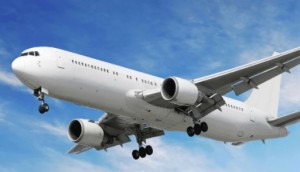 Kazakhstan recently announced plans to create a new airline to serve domestic routes that is expected to increase the country’s population mobility and boost intra-regional commerce.
Kazakhstan recently announced plans to create a new airline to serve domestic routes that is expected to increase the country’s population mobility and boost intra-regional commerce.
The new service will be called Air Kazakhstan and is expected to include 10 78-seat Bombardier Dash 8 Q400 turboprop-powered aircraft, Umirzak Shukeyev, chairman of the board of the Samruk Kazyna National Welfare Fund, announced recently.
The goal is to “register the company by May … have the planes delivered by the end of 2014, and commence flights early next year,” said Shukeyev, who offered no further details about the plane-delivery deal with Montreal-based Bombardier.
The Canadian aircraft maker refused to comment on the agreement. “We are currently in discussions with several buyers in the region and are not committed to any particular one,” said Mark Duchesne, a media relations contact at Bombardier.
The announcement of the new airline follows a recent meeting between Kazakhstan President Nursultan Nazarbayev and Chief Executive Officer of Canadian plane manufacturer Bombardier Pierre Beaudoin, after which Bombardier was invited to open a representative office in Kazakhstan.
Despite Kazakhstan’s rapid economic growth, domestic routes continue to be served by older aircraft. The development of regional aviation is an important step, not just for transportation, but also for the benefitof the population through increased mobility.
The fact that President Nazarbayev and Samruk Kazyna, which manages assets in strategic national companies worth tens of billions of dollars, are involved in the project, speaks volumes about the level of the government’s commitment to increasing domestic travel.
“Aeroflot and Turkish Airlines are two success stories where the government owns a majority stake,” said Dennis Vorchik, transportation analyst for Uralsib Capital, Moscow-based investment bank.
Over the past several years, the Russian government has listed reviving local aviation among its key priorities and has revamped local airports and subsidised regional air services. Russian Prime Minister Dmitry Medvedev also ordered his government to improve aviation in the vast country’s far flung regions. The result was a 14 percent increase in passenger numbers in the first three quarters of 2013 and a 16 percent increase in regional flights. This totalled 8.5 million passengers in the first three quarters of 2013, which was a significant improvement over the same period in 2012 and previous years.
In what is seen as a major step in the development of Russia’s regional aviation, state-owned Aeroflot introduced Aurora Airline to serve the country’s far east. Aurora has four Dash-8 Q300 and two Dash-8 200, among other aircraft. Aeroflot is also launching its low-cost airline Dobrolet, which will focus on domestic routes in Russia. Other airlines, such as Ural Airlines, Rusline and UTair have also significantly increased the number of their regional flights.
“I have been working in Russia on and off since 1994 and traveling everywhere by plane,” said Andrew Romeo, an expat executive of a Saint Petersburg-based consumer goods company. “I use to limit trips to one city because all regional cities were reachable by air only through Moscow. Now, it is possible to leave Moscow or St. Petersburg for a regional city and fly from that city to other destinations in the same or neighbouring regions without using Moscow as a hub,” he said.
The new Air Kazakhstan and existing Kazakh carrier, Air Astana, are expected to work closely on the project. Air Astana President Peter Foster said in a statement that “Air Astana has been involved in the discussions of the formation of a regional airline with our majority shareholder, Samruk Kazyna, since we retired the Fokker 50 fleet last January.”
Air Astana was established in 2001 and made its inaugural flight in May 2002. It currently operates an all-Western fleet of Airbus A320, Boeing 767-300ERs, 757-200s and Embraer E-190s serving more than 60 international and domestic routes. Samruk Kazyna owns a 51 percent stake in the company with Britain’s BAE Systems, Plc owning the rest.
“We welcome the decision and expect to work closely with the new airline to jointly develop these markets for the benefit of both airlines and of the traveling public,” Foster added. Many domestic airports cannot serve Air Astana’s all-jet fleet and the company needed to take steps to serve these cities with modern turboprops operating to internationally compliant standards. The creation of Air Kazakhstan will now allow Air Astana to focus on international routes.
Five airlines currently conduct regular flights in Kazakhstan with 28 more offering charter flights. And Bombardier’s Dash 8 Q400 is not the only option available in this plane class. Designed for mid-range flights (up to 2,430 km) at an average cruising speed of 650 km/h, the Canadian-made aircraft competes with the Russian Sukhoi Super Jet 100 (distance 3,048 km, speed 830 km/h, 98 seats), Brazilian Embraer 120 turboprop aircraft, the Czech L-410 prop engine and various other mid-range aircrafts.
No matter what the final make up of the new Air Kazakhstan fleet will be, developing regional air service in the world’s ninth largest country by land mass is likely to be a boon to intra-Kazakhstan commerce and economic diversification.


